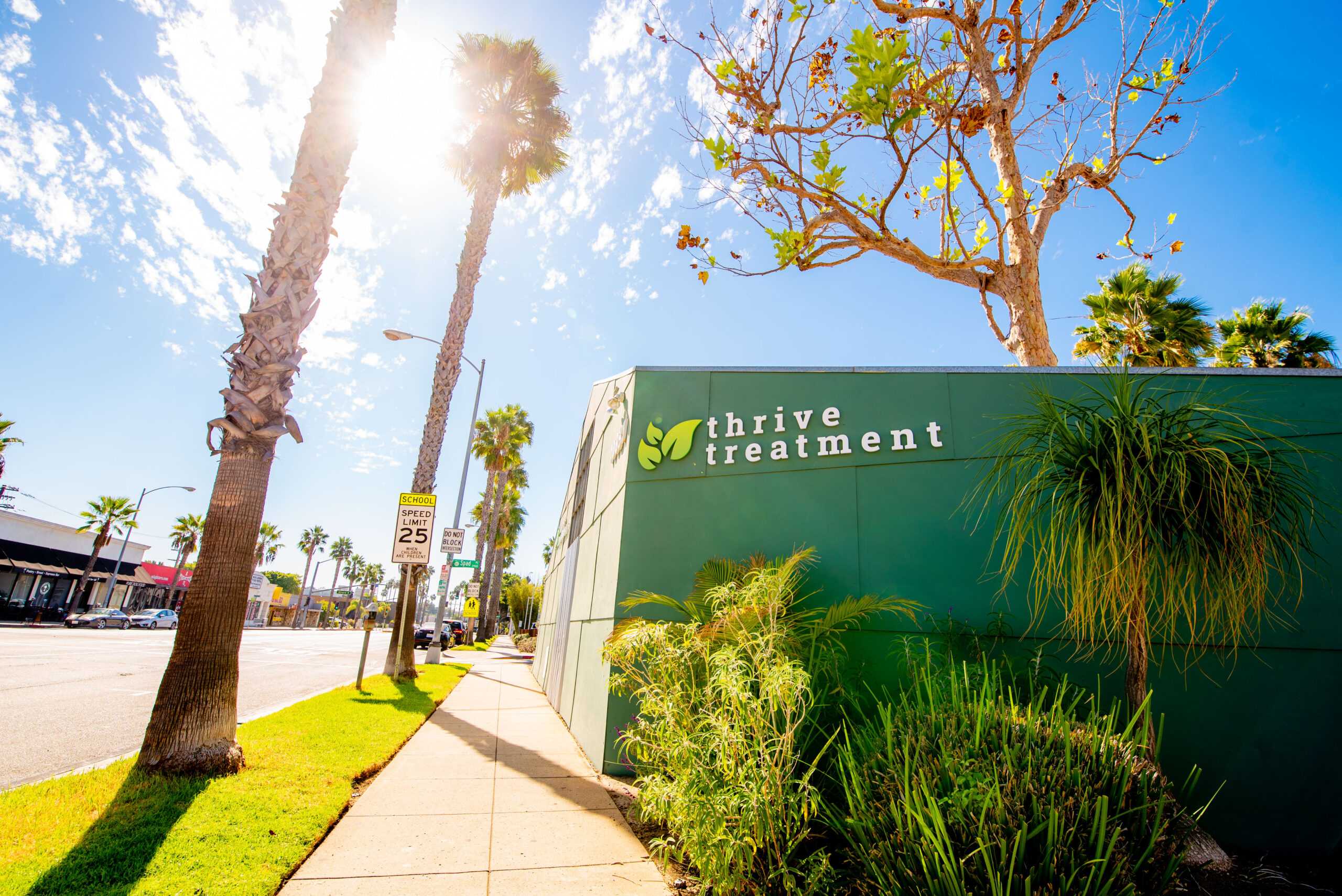Many successful drug treatment programs utilize many different components that are evidence-based, extensively tested, and proven to work. One of the cornerstone programs found in many if not all drug treatment programs is group therapy. Group therapy helps people become empowered and invested in their recovery. Ultimately, group therapy substance abuse treatment builds solid support networks for newly recovering addicts to gain confidence and thrive in their newfound sobriety.
If you are about to enter a drug treatment program, you may feel a little apprehensive regarding group therapy. This article will help you understand how group therapy is used in rehab. Thrive Treatment is one of Southern California’s premier drug treatment centers. Our experienced and compassionate team of treatment professionals utilizes a wide spectrum of evidence-based programs and services to help you overcome addiction once and for all. Call us today to learn more about our Los Angeles drug rehab center.
Defining Group Therapy
In a discussion about group therapy addiction treatment, it is important to have a working definition of group therapy. Group therapy can be defined as the treatment of multiple patients at once by one or more healthcare providers. Group therapy is commonly used to treat drug and alcohol addiction, but it is also effective in treating conditions such as emotional trauma, anxiety, depression, post-traumatic stress disorder (PTSD), and attention deficit hyperactivity disorder (ADHD).
The size of group therapy sessions is generally between 5-15 patients. However, these groups can be larger depending on the type of group and the concept being discussed within that group. In general, group therapy used in drug rehab is held once or twice weekly with each session lasting an hour. In addition to group therapy, individual clients may also have additional one-on-one sessions if their issues are more complex and need more individual attention from experienced therapists.
How is Group Therapy Used in Rehab?
Like many programs found in treatment, group therapy is extremely versatile and can be used in a variety of ways. For example, there are open groups where members can join and leave at any time as well as closed groups where members stay from the beginning to the end of a particular session. While many groups are run by a single counselor, there are groups led by two (or even more) counselors that ensure the rules of the group are enforced and how group members interact with each other.
During sessions, therapists will pose specific questions and encourage participation from the members of the group. Group members are free to share their experiences as well as tips on how they overcame certain issues. The feedback given in a group setting is both non-judgmental and supportive. The primary goal of group support is to help all who are part of the group gain the knowledge they need to reach their individual treatment goals. As with individual and family therapy, confidentiality is the primary principle that guides group therapy. Within the group, it is expected that all members honor the confidentiality of everyone.
What Are the Benefits of Group Therapy?
Group therapy used in rehab has a myriad of benefits that help clients gain confidence in recovery. The first and most obvious benefit is the support received from both therapists and fellow group members. Within group therapy, clients are surrounded by peers who share similar experiences in addiction. Secondly, group therapy allows each member to get in touch with their feelings and thoughts and allows each client to express what they think and feel in a non-judgmental environment.
Thirdly, people in group therapy learn healthy ways to communicate with each other. Members learn how to engage in active listening and encourage sharing of their own experiences as well as provide feedback to other members of the group. Additionally, group therapy provides a safe and nurturing environment that allows clients to share and grow in recovery while reducing anxiety and depression.
Thrive Treatment’s Group Therapy Programs Help You Recover
Group therapy gives people the tools and support they need to become healthy, happy, and sober. As one of Southern California’s premier drug rehab facilities, Thrive Treatment provides group therapy programs that are evidence-based and proven to work. Our effective group therapy programs are part of a strong overall treatment program that is personalized to meet each client’s needs throughout their time in treatment.
Call Thrive Treatment today and leave addiction behind once and for all.




